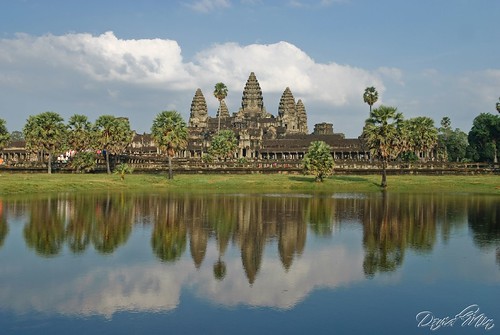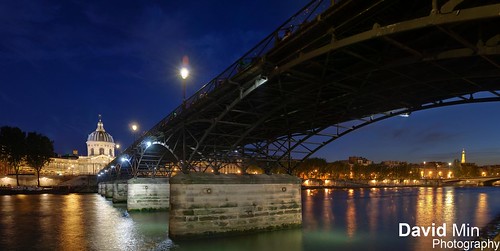Maya Bay is a stunningly beautiful bay that's sheltered by 100-metre high cliffs on three sides. Inside the bay there are several beaches, most are small and some only exist at low tide. The main one is around 200 metres long with silky soft white sand, underwater colourful coral and exotic fish in exceptionally clear water; the whole bay is one big reef.
Maya Bay has become the main tourist attraction of Phi Phi since The Beach was filmed here in 1999. It was always very popular before the film but now people around the world who haven't even heard of Phi Phi have certainly heard of Maya Bay.
The bad news; as it's so beautiful and so well known many boats are required to ferry all the visitors in and out. On any given day at any time there will be 30 + speedboats and longtail boats on the beach, with large ferry boats carrying hundreds of snorkelers and sightseers moored in deeper water. Beautiful it is, secluded it isn't – thousands of people visit each day. Try to visit early in the morning or after 17:00 and you'll avoid the crowds.
Thursday, April 28, 2011
Koh Phi Phi Leh, Thailand - Maya Bay
Tuesday, April 26, 2011
Siem Reap, Cambodia - Angkor Wat
If you've read anything at all about Angkor Wat, you'll probably know at least three things: Angkor is one of the most beautiful and suggestive place on the planet, the Angkor Wat Temples area is much bigger than the Angkor Temple alone, and last, nothing is homogeneous, being the temples built in different times, during a four centuries process.
Many people, when they hear the name Angkor in a conversation, they ask: "Angkor What?". Angkor Wat is one of the most beautiful and fascinating places on the planet. Made by the Khmer kings in a process that lasts almost 4 centuries, this magnificent area has been abandoned and hidden by the forest. Re-discovered by a french man about 150 years ago, Angkor Wat is ready to become one of the most visited archaeological and artistic site on the planet.
Thursday, April 21, 2011
Paris, France - Pont des Arts (Happy Easter !)
The Pont des Arts or Passerelle des Arts is a pedestrian bridge in Paris which crosses the Seine River. It links the Institut de France and the central square (cour carrée) of the palais du Louvre.
Between 1802 and 1804, a nine-arch metallic bridge for pedestrians was constructed at the location of the present day Pont des Arts: this was the first metal bridge in Paris. This innovation was due to Napoléon I, following a design of English manufacture.
The bridge has sometimes served as a place for art exhibitions, and is today a studio en plein air for painters, artists and photographers who are drawn to its unique point of view. The Pont des Arts is also frequently a spot for picnics during the summer.
Nowadays the bridge has become a hotspot for couples who attach a padlock to the railing and throw the key into the river below.
Tuesday, April 19, 2011
Shanghai - Pudong skyline
Pudong has become a New Open Economic Development Zone, and has emerged as China's financial and commercial hub. Pudong is home to the Lujiazui Finance and Trade Zone, the Shanghai Stock Exchange, and a skyline that includes the symbolic Oriental Pearl Tower, the Jin Mao Building, the Shanghai World Financial Center and soon-to-be-completed Shanghai Tower reflective of Shanghai and China's rapid economic development.
Sunday, April 17, 2011
Arizona - Horseshoe Bend
Horseshoe Bend - Page
Saturday, April 16, 2011
Bangkok - Wat Arun
The famous Wat Arun, perhaps better known as the Temple of the Dawn, is one of the best known landmarks and one of the most published images of Bangkok. It consists of a massive elongated prang (Khmer-style tower), and is surrounded by four smaller prangs.
The Wat really looks better from a distance than close up, and you're not missing out too much even if you only view from across the river. The grounds are fairly pleasant and peaceful though, with good murals and a main Buddha image supposedly designed by King Rama II.
It is possible to walk a limited way up the (very steep) stairs of the main prang, which gives a reasonable view of the Chao Phraya river.
Despite it's name (coming from Aruna, the Indian god of the dawn), the best views and photos of Wat Arun are in the evening with the sun setting behind it. There are some restaurants on the opposite side of the river that are good for watching this, though you'd be lucky to see the image of Wat Arun that's on all the postcards - that of the red sky sunset with the sun setting directly behind the temple. Sunset is around 6pm - 7pm all year round in Bangkok.
Tuesday, April 12, 2011
Arashiyama - Bamboo Forest
Arashiyama is a pleasant and touristy district on the western outskirts of Kyoto, Japan. The location is well known for its temples and bamboo forest. Bamboo groves are found behind Tenryuji Temple and along the trail to the Okochi Sanso. The bamboo is still used to manufacture various products, such as baskets, cups, boxes, mats and pieces of art at workshops in the Arashiyama area.
Sunday, April 3, 2011
Paris La Defense - Grande Arche
The Grande Arche de la Defense is a monument and building in the business district of La Defense to the west of Paris, France. The Arche is almost a perfect cube; it has been suggested that the structure looks like a four-dimensional hypercube projected onto the three-dimensional world. It has a prestressed concrete frame covered with glass and Carrara marble from Italy.
In addition, the Arche is placed so that it forms a secondary axis with the two highest buildings in Paris, the Tour Eiffel and the Tour Montparnasse.
Saturday, April 2, 2011
Vancouver Island, Canada - Cape Scott
Cape Scott Provincial Park is a 21,849 hectare, rugged coastal wilderness at the northwest tip of Vancouver Island. The park is characterized by 64 kilometers of spectacular ocean frontage, including about 23 kilometers of beaches, running from Nissen Bight in the north to San Josef Bay in the south. Rocky promontories and headlands intersperse wide sandy beaches.
The heavy rainfalls and violent windstorms of the Cape Scott area have shaped its history. Annual precipitation, almost totally in the form of rain, is between 375 and 500 centimeters. Even in summer, prolonged sunny periods are a rarity. High winds, rain and generally stormy conditions can be expected at any time of the year.
To access to this piece of paradise, it is a little bit complicated ! After a couple hours of driving, at the end of the road, you can park your car and hike along a beautiful, yet easy, wooded trail until reaching the Pacific Ocean, beyond a wide stretch of soft sandy beach. But the best part is the tiny cove, with rocky outcroppings right on the beach. There are even caves and miniature bonsai trees! More amazing than it might sound, this sight made the long trip more than worthwhile!
Friday, April 1, 2011
Kyoto - Ninnaji temple
Ninnaji is one of Kyoto's most interesting temples, featuring a large variety of different buildings and gardens on its spacious grounds. It belongs to Kyoto's UNESCO world heritage sites.
Among the numerous buildings on the temple grounds, are elegant palace style buildings surrounded by beautiful Japanese gardens, a five storied pagoda, various temple halls, a massive entrance gate, bell tower and tea houses.









